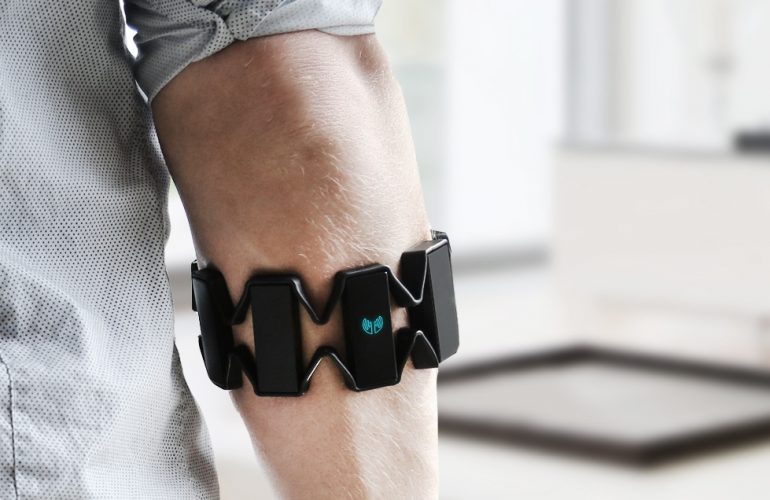In a Medium post this morning, Thalmic Labs CEO and co-founder Stephen Lake announced that the company raised $120 million USD ($158 million CAD) in a Series B led by Intel Capital, The Amazon Alexa, and Fidelity Investments Canada.
Lake said that the company is using the funding to reimagine human-computer interaction for its Myo armband. “We’ve been reimagining human-computer interaction since we first created the Myo armband in 2012 and are proud of what the team at Thalmic has accomplished to date,” he wrote.
The news comes a week after the company announced the opening of its San Francisco office and the hiring of former Samsung exec Tara Kriese. The company is hiring for engineering, sales, marketing, and business development positions in San Francisco, while also continuing to hire in Waterloo.
“Tara will be a key component in building out those functions, given her unique skill of developing disruptive market opportunities in emerging product categories,” Lake told BetaKit.
Since its launch four and a half years ago, Thalmic’s developer community has used the Myo armband to create a gesture-controlled prosthetic limb (as was the case at Johns Hopkins Applied Physics Laboratory) and translating sign language.
In his own blog post, Nabeel Hyatt, partner at Spark Capital (which also participated in this round) detailed how the company remained an “underdog that takes risks” event after its almost immediate success, and has chosen to build a new product rather than build a Myo 2.0. “We continue to be focused on technology that naturally enhance our lives, further blurring the lines between man and machine – the same vision that the company was born out of. We will continue in the direction of delivering exciting products that align with this vision,” said Lake.
“It was an exciting product, with a lot of potential. But it would be close to a year before we got any feedback on whether the product was even technically possible, let alone ready to launch,” Hyatt wrote. “This was not the easy choice, not just for the technical and business risk, but also the social hurdles involved. So many startups get wrapped up in the appearance of success, versus the hard choices necessary to actually be successful. They had no doubt been preached at hundreds of times to ‘launch early and often’, but they were independent thinking enough to ignore that conventional wisdom in this case.”


